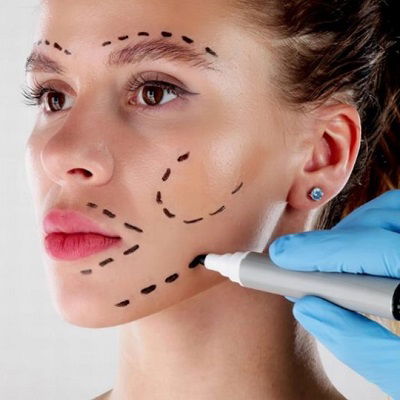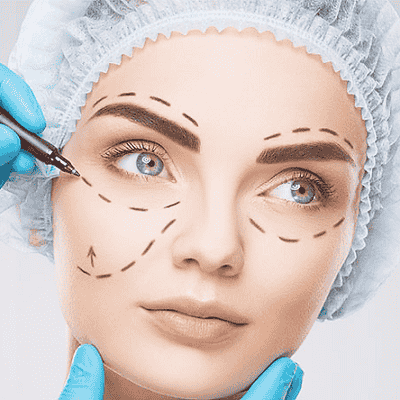How to Choose Between Surgical and Non-Surgical Cosmetic Procedures
When considering cosmetic enhancements, the decision between surgical and non-surgical procedures can be challenging. Many individuals in Muscat and worldwide seek to improve their appearance, but understanding the differences, benefits, risks, and outcomes of each approach is essential. As a Plastic Surgeon in Muscat, I have seen firsthand the diverse preferences and needs of my patients. In this comprehensive guide, we will explore key factors to consider when choosing between surgical and non-surgical cosmetic procedures, helping you make an informed decision.

1. Understanding Surgical Cosmetic Procedures
Surgical cosmetic procedures involve operations that change or enhance the appearance of various parts of the body. These procedures are often more invasive, require anesthesia, and typically involve longer recovery times compared to non-surgical alternatives. The results, however, tend to be longer-lasting and more dramatic.
Common Surgical Cosmetic Procedures
Some of the most popular surgical cosmetic procedures include:
- Facelifts: A facelift involves the removal of excess skin and tightening of underlying tissues to reduce the appearance of sagging and wrinkles, offering a youthful, refreshed appearance.
- Rhinoplasty: Often referred to as a nose job, rhinoplasty is a procedure to reshape or resize the nose, improving facial balance and harmony.
- Breast Augmentation: This surgery enhances the size and shape of the breasts through implants or fat transfer, helping individuals achieve their desired bust appearance.
- Liposuction: Liposuction removes excess fat from specific areas of the body, such as the abdomen, thighs, or arms, offering a more sculpted and contoured silhouette.
- Tummy Tuck: Also known as abdominoplasty, this procedure removes excess skin and fat from the abdomen, often following significant weight loss or pregnancy.
Benefits of Surgical Procedures
- Long-Lasting Results: Surgical procedures offer permanent or long-term results, making them ideal for individuals who seek significant and lasting changes.
- Comprehensive Transformation: For patients looking to address multiple concerns, surgery can offer a comprehensive solution.
- Enhanced Precision: Surgeons can make more precise, targeted changes during surgery, providing customized outcomes.
Considerations Before Opting for Surgery
- Recovery Time: Surgical procedures often require weeks or months for full recovery, depending on the procedure and the individual’s health.
- Invasiveness: Surgery involves cutting and stitching, which means it carries a higher risk of complications such as infection, scarring, and anesthesia-related risks.
- Cost: Surgical procedures tend to be more expensive, with additional costs for aftercare and follow-up appointments.
2. Exploring Non-Surgical Cosmetic Procedures
Non-surgical cosmetic procedures, as the name suggests, do not involve any cutting or major invasive techniques. These procedures typically focus on enhancing or rejuvenating the skin and underlying structures through minimally invasive techniques. While they may not offer the same dramatic results as surgery, non-surgical options are ideal for individuals looking for subtle enhancements with minimal downtime.
Popular Non-Surgical Cosmetic Procedures
- Botox and Fillers: Botox is a popular choice for treating fine lines and wrinkles by temporarily relaxing facial muscles. Dermal fillers are used to add volume to areas such as the cheeks, lips, and under-eye area, offering a youthful and plump appearance.
- Chemical Peels: Chemical peels involve applying a solution to the skin to exfoliate dead skin cells and improve the texture and tone, helping to reduce signs of aging, pigmentation, and acne.
- Laser Skin Resurfacing: Laser treatments, such as fractional CO2 lasers, target skin imperfections like scars, sun damage, and wrinkles by stimulating collagen production and improving skin texture.
- CoolSculpting: A non-invasive fat reduction treatment that freezes and eliminates fat cells from targeted areas, providing a slimmer and more contoured body without the need for surgery.
- Ultherapy: This treatment uses ultrasound technology to stimulate collagen production deep within the skin, lifting and tightening areas such as the face, neck, and décolletage.
Advantages of Non-Surgical Procedures
- Minimal Downtime: Non-surgical procedures typically require little to no downtime, allowing patients to return to their daily activities almost immediately.
- Less Risk and Recovery: Because these procedures are minimally invasive, the risks of complications, scarring, and anesthesia-related issues are reduced.
- Lower Cost: Non-surgical treatments tend to be more affordable than surgical options, making them an attractive option for individuals on a budget.
- Quick Results: Many non-surgical treatments provide visible improvements within a few days, offering an instant boost to one's appearance.
Drawbacks of Non-Surgical Procedures
- Temporary Results: While non-surgical procedures can yield impressive results, they are often temporary and require maintenance treatments to sustain the effects.
- Limited Impact: Non-surgical treatments may not achieve the dramatic, lasting results that surgical procedures can offer, especially for significant cosmetic changes.
- Frequent Touch-Ups: Depending on the procedure, patients may need to schedule periodic touch-ups or maintenance treatments to maintain the results.
3. Factors to Consider When Choosing Between Surgical and Non-Surgical Procedures
When deciding between surgical and non-surgical options, there are several important factors to consider. These factors can help you determine which approach best aligns with your aesthetic goals, lifestyle, and budget.
1. Desired Outcome
One of the most important considerations when choosing between surgery and non-surgical treatments is the type of result you want. If you are looking for a subtle improvement or maintenance of your current appearance, non-surgical procedures may be the best fit. However, if you have more significant concerns—such as excess skin, severe sagging, or major reshaping—surgery may be the only option to achieve your desired result.
2. Budget and Cost
The cost of cosmetic procedures can vary widely, with surgical treatments generally being more expensive than non-surgical options. Surgical procedures require hospitalization, anesthesia, and more extensive aftercare, all of which contribute to higher costs. Non-surgical procedures are often more affordable and can be an attractive option if you have a limited budget or are hesitant to commit to a major financial investment.
3. Recovery and Downtime
Consider how much time you can afford to take off from your daily routine. Surgical procedures typically require more recovery time, including post-operative care and follow-up visits. Non-surgical treatments often offer faster recovery times, with many people resuming normal activities within a day or two.
4. Long-Term Results
Surgical procedures offer long-lasting or permanent results, making them ideal for those who want significant changes that do not require regular touch-ups. Non-surgical treatments, on the other hand, require maintenance sessions to preserve results. If you are comfortable with the idea of ongoing treatments, non-surgical options may be a better fit.
5. Health and Risk Tolerance
Your overall health and willingness to accept potential risks are crucial when deciding between surgical and non-surgical treatments. Surgery, while generally safe, carries inherent risks such as scarring, infection, and anesthesia complications. Non-surgical procedures are less risky but may still have side effects such as swelling, bruising, or allergic reactions. Be sure to discuss any underlying health concerns with your doctor before making a decision.

4. Consultation with a Plastic Surgeon
Whether you are leaning toward a surgical or non-surgical option, it is essential to consult with a qualified plastic surgeon in Muscat. A consultation will provide an opportunity for you to express your aesthetic goals, discuss your medical history, and learn about the most appropriate options for your needs. During the consultation, your surgeon will:
- Assess your skin, facial structure, and body type.
- Recommend suitable procedures based on your goals and preferences.
- Explain the risks, benefits, and expected outcomes of each option.
- Discuss the cost, recovery time, and aftercare involved.
5. Final Thoughts
Choosing between surgical and non-surgical cosmetic procedures is a deeply personal decision, and there is no one-size-fits-all solution. Both options offer significant benefits and considerations, depending on your goals, budget, and lifestyle. By carefully weighing the pros and cons of each approach, you can make an informed decision that enhances your appearance while aligning with your expectations. Ultimately, a plastic surgeon in Muscat can help guide you through the process, ensuring that your choice results in a positive, satisfying outcome.Before undergoing any cosmetic procedure, always prioritize safety, do thorough research, and ensure you are in the hands of a skilled, board-certified surgeon or licensed practitioner. Whether you choose surgery or a non-invasive option, remember that enhancing your appearance should empower you and make you feel confident in your own skin.
